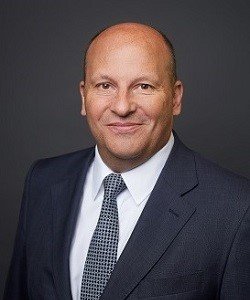Participants:
Craig Gillespie, Head of Life and Alternative Credit Portfolio Management, Leadenhall Capital Partners
Niklaus Hilti, Head of Insurance Linked Strategies, Credit Suisse
Scott Mitchell, Portfolio Manager, Head of Life ILS, Schroders
Adam Robinson, Head of Life and Chief Underwriting Officer (Life), Securis Investment Partners
The Life ILS market has evolved in the past twenty years from what was a niche market to a fully-fledged asset class. Life Risk News’ James Norris spoke to four leaders in the life ILS market to get their views on a range of topics affecting their market in our inaugural life ILS roundtable.
JN: What is the main issue or development from a macro perspective in the past twelve months that has had the biggest impact on the Life ILS sector, and why?
SM – Covid-19 has naturally been a focal point over the past few years, especially in the context of extreme mortality risk transferred to the ILS market. While no longer the headline that it was, mortality at working ages remains higher than pre-Covid levels in some countries, notably the US and the UK. That ongoing uncertainty continues to impact the relative attractiveness of mortality risk for investors.
AR – In the last twelve months, there have really been two main macro events that have impacted the Life ILS sector. The first is the ‘exit’ from Covid-19 as a global pandemic state, the second (and more recently) has been the global hike in rates. The exit from the pandemic allows ILS participants – and crucially investors in the sector – to consider a more ‘normal’ mortality experience (i.e., a baseline level of mortality, though defining this remains a challenge). This is important for trade pricing by ILS participants (more stable mortality means pricing is not so wide on risk-bearing trades, increasing the chance of transacting) and it allows investors to invest without any hanging concern of investing in life in the midst of the largest life shock event since the start of this sector.

On the rates side, how this will impact the sector is still unclear. It will require ILS participants to seek higher absolute returns as investors require a certain spread above risk-free. A consequence of this is that longer-dated cash flows become relatively less valuable. This may mean there are fewer attractive long dated trades to participate in as the value in longer dated cash flows reduce much more than the shorter dated, as rates go up. There will also be an angle allowing Life ILS funds to ‘pick’ the best opportunities. Rates have risen alongside inflation and a cost-of-living squeeze. This may mean existing insurance policies become less affordable, pushing up lapse rates in the future. However, choosing to transact with counterparties who have ‘stickier’ insurance products (think of an individual buying a product as a necessity rather than a luxury) can counter a lot of this risk and allow Life ILS funds to demonstrate relative expertise compared to peers.
CG – The major development from a macro perspective emerging in 2022 is a scarcity of capital driven by investor’s reaction to geopolitical conflict and an aggressive rate tightening cycle being implemented in unison by central banks in developed countries.
Prior to these shock events over the last 12 months, financial markets and their participants had become accustomed to operating in a stable environment where capital was plentiful. This period of equilibrium had operated for over a decade with only minor short-lived disruptions being experienced (for example the initial emergence of Covid in early 2020 which was quickly addressed via government and central bank action).
The large disruptive macroeconomic events we are currently experiencing are unlikely to be so easily remedied as other shocks over the last 10 years, and so consequently it is likely that this scarcity of capital may persist for some time.
The Life ILS sector provides capital to the life and health insurance markets, and these businesses are by nature capital consumptive. A broader scarcity of capital in financial markets therefore changes the dynamic in which the Life ILS sector works with these insurance markets to continue providing the capital necessary for these businesses to continue growing and fulfilling their business plans. This backdrop of uncertainty and volatility provides attractive investment opportunities for managers that are well positioned to provide capital solutions to the life and health insurance markets.

JN: What, in your view, is the biggest misconception that end investors have about the Life ILS market, and what is the impact of this misconception on the Life ILS market?
NH – I’d like to highlight two points from our experience: The first and most important one is that investors believe Life ILS is synonymous with the US life settlement market. However, Life ILS is much broader, and the variety of risks is much greater than just longevity risk in the US life settlement market.
The second misconception held by some institutional investors, particularly pension plan investors, is that by allocating to Life ILS they would be taking on significant longevity exposure that is correlated with their own longevity liabilities. In fact, there are many Life ILS transactions that serve as a hedge to their longevity risk or are neutral.
CG – Our experience is that institutional investors are in general sophisticated with a good understanding of the portfolio benefits that can be obtained through allocating to alternative assets such as Life ILS. Institutional investors have the option of selecting from many different alternative assets for their portfolios and so it is not always possible for these investors to have sufficient time or resources to fully appreciate the breadth and depth of investment exposures which might be taken on through a Life ILS mandate.
Misconceptions can arise whereby an investor’s understanding of a Life ILS allocation is simplified to having just one type of exposure where they have had less favourable experience in the past or have heard negative market sentiment on one specific type of Life ILS investment exposure. For example, some investors immediately connect Life ILS as being Life Settlements whereas the universe of investment opportunities in Life ILS is vast across mortality, lapse, morbidity, and longevity risks.
Life ILS mandates are often offered by an investment manager specialising in both Life and Non-Life ILS, and this may also give rise to a potential misconception whereby an investor may try to understand the Life ILS offering starting from a Non-Life ILS perspective. The Life ILS and Non-Life ILS investment profiles differ significantly, and so to get to the level of understanding necessary for an investor to have conviction to allocate requires the manager to help ensure the investor approaches each product from the right perspective.
Either of these misconceptions can ultimately lead to investors not committing to a Life ILS allocation, and therefore the market not growing to the size it should, given the opportunity set that is available.
JN: What is your view on the capacity for growth in the Life ILS market? Are we only scratching the surface? Is it quite mature, with little capacity remaining?
NH – We see significant growth potential in the life segment. Regulatory developments and in particular the development of more sophisticated risk models for life insurance will continue to drive momentum in ILS for life insurance over the next decade. We also believe that higher financing costs with increased interest rates will play an important role in the further development of the market.
AR – I believe the market has significant growth potential. There has been a shift in the distribution model whereby smaller start-up brokers are trying to find gaps in the market to sell new products to (typically protection products to segments of the market with a ‘protection gap’). This contrasts with the older mode of insurers selling more ‘one size fits all’ products directly. These brokers need capital to grow, and the ILS market is perfectly placed to help with this.
Geographically, most Life ILS investments have been in Europe and North America. The rest of the world could be thought of as an untapped market, which I am sure will lead to growth.
On risk-bearing trades, reinsurers are again engaging in conversations to see what pure risk trades they can push to the Life ILS market, these are trades which are not motivated by a financing need. This is likely to be a growth area considering most Life ILS trades over the prior years have had more of an underlying financing rather than risk motivation from the counterparties.
JN: Interest rates have been rising recently in developed markets, offering investors a better return on more liquid yield generating products like government bonds. What’s the impact of this on the life ILS sector, given that a sizeable chunk of the market is aligned with ‘alternative credit’?
NH – We are observing a “pause effect” and currently also recommend prospective investors to wait and see. This is mainly driven by the fact that the more liquid markets are adapting to the new interest rate environment much faster than the illiquid Life ILS market. Once the new pricing has fully filtered through, we believe Life ILS can be as attractive as other asset classes, but with the distinct advantage of being only marginally correlated to financial markets. The recent market turmoil has once again shown investors that most asset classes are highly correlated. Accordingly, we expect to see increased demand for true alternative strategies and uncorrelated asset classes.
SM – We continue to observe strong demand for Life ILS from institutional investors, in particular, those that recognise the relative risk-return profile and diversification offered by Life ILS as part of a broader portfolio. However, for certain investors, the interest rate environment is influencing their overall approach to asset allocation. For example, the funding position of defined benefit pension funds will likely have benefited from recent rate increases, perhaps resulting in less need to allocate to alternative asset classes such as Life ILS.

CG – In our experience, those investors that have actually been allocating to the Life ILS market have done so on the basis of achieving a defined spread relative to an underlying liquid benchmark, such as government bonds, and so from that perspective changes in the underlying liquid benchmarks should be neutral.
There is a section of investors that allocate and invest on an absolute return basis and the changes in more liquid investments have both positive and negative impacts. For those investors with higher absolute return targets, it may become more desirable to allocate to the Life ILS sector as the absolute returns achieved may now be higher and in line with their requirements. For those investors with lower absolute return targets, it may now become less desirable as they are able to achieve their return target through more stable investments.
There is always a place for an allocation to an alternative asset such as Life ILS within an institutional investor’s portfolio due to the diversifying investment profile on offer. We would not see liquid fixed income as a competing product, as Life ILS is designed to be a broadly uncorrelated diversifying investment class, which liquid fixed income is not. Life ILS does exhibit certain attractive characteristics (such as cash flow generation) similar to fixed income, and so these in conjunction with the diversification make Life ILS well worthy of allocation to an investor’s portfolio.
JN: In which product areas of the broader Life ILS universe have you seen most growth in during the past twelve months – i.e., are there products that you have been investing in more than others, and if so, why?
NH – With the increased risk perception in connection with the pandemic risk, we have seen a reassessment of mortality risks. Multiples have increased by a factor of 4 to 5 compared to before the pandemic. However, we are currently holding back on new investments, as we believe the returns in 2023 will be significantly more attractive. We are also hesitant on longevity risk, at the moment, as the rebound effect after a pandemic is not well understood and we therefore believe that longevity risk cannot be properly assessed towards the end of or after a pandemic.
SM – Since launching the Life ILS strategy, Schroders has seen continual growth in its core segment of structured financing, such as embedded value and commission financing arrangements. In recent years, we have also seen increased activity around privately placed debt and other capital instruments.
JN: What are some of the headwinds facing the Life ILS sector in the next twelve months and what’s their likely impact?
SM – Structural barriers must be addressed before the life industry can consider meaningful volumes of longevity and mortality risk being transferred to the capital markets.
For the most part, longevity trades are not particularly investor-friendly, in terms of their structure and duration. Most of the risk, therefore, remains with the traditional (re)insurance market, which can leverage the cross-diversification benefits more easily than a Life ILS fund. The traditional (re)insurance market will likely have to hit capacity constraints before we see a forced change in those dynamics.
Despite increased demand for mortality risk transfer, capital markets investors will need to be convinced that residual uncertainty from Covid-19, both in terms of baseline mortality rates but also future pandemic risk, has been adequately addressed in deal structures and modelling.
AR – With rates going up, longer dated cash flows can be less valuable when priced. This would reduce the relative gain in a counterparty choosing to finance with longer term financing compared to short term financing (put simply, counterparties get less money from locking in longer term financing compared to simpler shorter-term financing). I believe the other benefits of Life ILS (it’s risk-bearing nature, the bespoke structuring which can give different accounting treatments) can counter some of this but clearly it can create a ‘headwind’.

CG – Scarcity of capital is likely to continue be a theme throughout the remainder of 2022 and into 2023. We see this as both a headwind and a tailwind for the Life ILS market. It presents as a headwind on the basis that investors may be more cautious to allocate or likely to allocate in smaller sizes than in prior years. With mainstream assets (for example equities and fixed income) suffering significant loss of value in 2022, and alternatives such as Life ILS demonstrating their diversifying characteristics by continuing to perform, this has led to some investors becoming overweight to alternatives. Some investors are now having to rebalance their portfolios to meet their strategic asset allocations, and this can lead to a reduced allocation to alternatives such as Life ILS.
From a pure risk standpoint, it is also worth noting that the outlook for mortality risk remains clouded with Covid-19 remaining present and concerning trends emerging in other causes of death in certain countries. Drug-overdose linked deaths in the USA have continued to grow and contribute to excess deaths in working age groups, and cardiac and circulatory disease incidence has also driven excess deaths in the UK during summer 2022. The impact of these events on portfolios has been limited so far, however they present a continuing challenge to the underwriting of mortality exposed investments.
JN: What about the tailwinds and their likely impact?
NH – We believe that the increased financing costs for life insurers will drive growth and reinforce the attractiveness of value-in-force financing transactions as an attractive alternative; a perception of increasing risk related to pandemic risks will require life (re)insurers to buy hedges; and life insurance risk is almost independent of inflation, and unlike non-life insurance, where inflation increases claims, the cost of life insurance is fairly inert.
SM – We currently consider deal flow, rather than investor capital, as being the main constraint of growth for the Life ILS market. However, as industry participants target a more optimal capital structure, they are increasingly recognising the benefits of the Life ILS market as a source of hybrid capital that offers a combination of liquidity and risk absorbing features. That will ultimately drive the growth of the market, in our view.
AR – The Life ILS market faced what could be considered in simple terms as its first ‘1 in 100-year event’ with Covid. Despite this, most funds made positive returns, returned cash from closed-ended strategies, and did not suffer the mark-to-market volatility of more liquid strategies. The last few years should be viewed as an acid test for the Life ILS strategy, and I hope it would encourage investors to continue to put money into this sector.
CG – Life and health insurance markets continue to have a need for plentiful capital to meet their ongoing business requirements. Capital being deployed now to meet the needs of the life and health insurance markets is being better rewarded in terms of risk-return profile as a result of the broader scarcity of capital.
The change in macroeconomic environment over 2022 has also had significant effects on life and health insurance balance sheets and this in itself presents opportunity as these businesses look to re-optimise their balance sheet for the new environment.
For those managers who have capital available to deploy, the current environment to structure innovative and impactful investments is favourable, and investors who have made these capital commitments stand to benefit from an improved risk-return profile on their capital.

